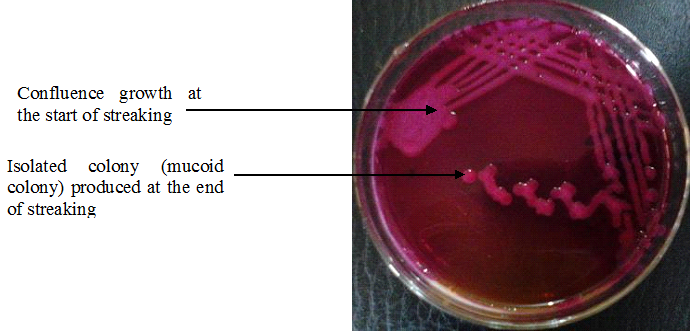Growth is simply defined as an irreversible increase in the size of an organism. It is one of the characteristics of living organisms. In microbiological terms, growth is basically the increase in the cell size and cell mass of a bacterial cell, and it occur during the development of the organism. Growth in microorganisms unlike other living organisms is usually measured in terms of increase in the number of cells or population of the microbial cells rather than increase in the size of an individual organism. Several methods exist for enumeration of the growth of bacteria and other unicellular organisms in the microbiology laboratory. Microorganisms are ubiquitous, and can grow in virtually all environments that support life. Some microorganisms can even grow successfully in extreme conditions that scarcely support other forms of life. For example, some microbes grown in extreme hot conditions as that found in boiling springs (e.g. Thermus species and some Archaea) and extreme cold conditions as that found in frozen Antarctic sea ice (e.g. Polaromonas bacteria, Archaea and some green algae or diatoms).
Microbial growth in the environment can be viewed in two perspectives viz: beneficial growth and harmful growth depending on the conditions and/or circumstances the growth is occurring. The multiplication of beneficial bacteria in the environment is significant to the sustenance of life on earth in that their activities impact on various important life processes such as nutrient recycling, nitrogen fixation (in agriculture), biodegradation and a multitude of other vital actions that maintain equilibrium in the environment. However, some other group of microorganisms are not beneficial, and are pathogenic in nature in that they cause a variety of diseases and infections to man, animals and plants in the environment. When the growth of pathogenic microorganisms is not controlled or inhibited, they cause numerous havoc to man that may result in colossal economic loss. Such pathogenic microorganisms growing on either biotic or abiotic surfaces in hospitals and non-hospital environments are responsible for plethora of nosocomial- and community-acquired infections now plaguing humanity.
The growth of microbial cells can be affected by the physical and chemical composition of their environment; and thus the growth of pathogenic organisms in vitro or in vivo could be effectively contained through proper antimicrobial actions. The growth of bacteria occurs when bacterial cells divide into two daughter cells by an asexual reproductive mechanism known as binary fission. Such cells are said to be viable because they are able to reproduce and increase the size of their population. On the other hand, a microbial cell can be said to be “dead” when it can no longer reproduce (i.e. grow and divide) when introduced into a growth medium that support its development. Such a cell is said to be non-viable (i.e. they are not alive and cannot divide or multiply.
Binary fission is defined as the cell division process in which bacterial cells divide to form two new identical cells from the parent organism. It is a duplication process in which a microbial cell divides to form two cells. After binary fission must have taken place, the resulting daughter cells produced are usually genetically identical to each other and to their parent cell.

However, the daughter cells might as well not be identical, and this happens when mutation occurs during the process of cell division. The increase in a microbial population when the bacterial cells are growing exponentially binary fission normally follows a geometric progression pattern. For example, one parent bacterial cell yields two daughter cells (this is the first generation). In the second generation, four cells are produced; in the third generation, 8 cells are produced; in the fourth generation, 16 cells are produced, and this process continues on and on until the microbial growth is inhibited. The bacterial cells proliferate and increase their numbers or population size in a process known as local doubling. Bacterial cells increases their population size in a process known as doubling (generation) time. Doubling time is simply defined as the time it takes a bacterial population to double and increase its population size. It is the time required for a microbial population to double. Bacteria grow in an exponential fashion; and in every exponential cell division of a bacterium, each cell division of the bacterial cell results in a doubling of the cell number in the growth medium (Figure 2). The increase in the number of bacterial cell is usually very low at low cell number, but after a few generations, the cell numbers increase exponentially or explosively (as shown in Figure 2); and after “n” divisions we have 2n cells.

References
Brooks G.F., Butel J.S and Morse S.A (2004). Medical Microbiology, 23rd edition. McGraw Hill Publishers. USA. Pp. 248-260.
Madigan M.T., Martinko J.M., Dunlap P.V and Clark D.P (2009). Brock Biology of microorganisms. 12th edition. Pearson Benjamin Cummings Publishers. USA. Pp.795-796.
Prescott L.M., Harley J.P and Klein D.A (2005). Microbiology. 6th ed. McGraw Hill Publishers, USA. Pp. 296-299.
Ryan K, Ray C.G, Ahmed N, Drew W.L and Plorde J (2010). Sherris Medical Microbiology. Fifth edition. McGraw-Hill Publishers, USA.
Singleton P and Sainsbury D (1995). Dictionary of microbiology and molecular biology, 3rd ed. New York: John Wiley and Sons.
Talaro, Kathleen P (2005). Foundations in Microbiology. 5th edition. McGraw-Hill Companies Inc., New York, USA.
Discover more from #1 Microbiology Resource Hub
Subscribe to get the latest posts to your email.


